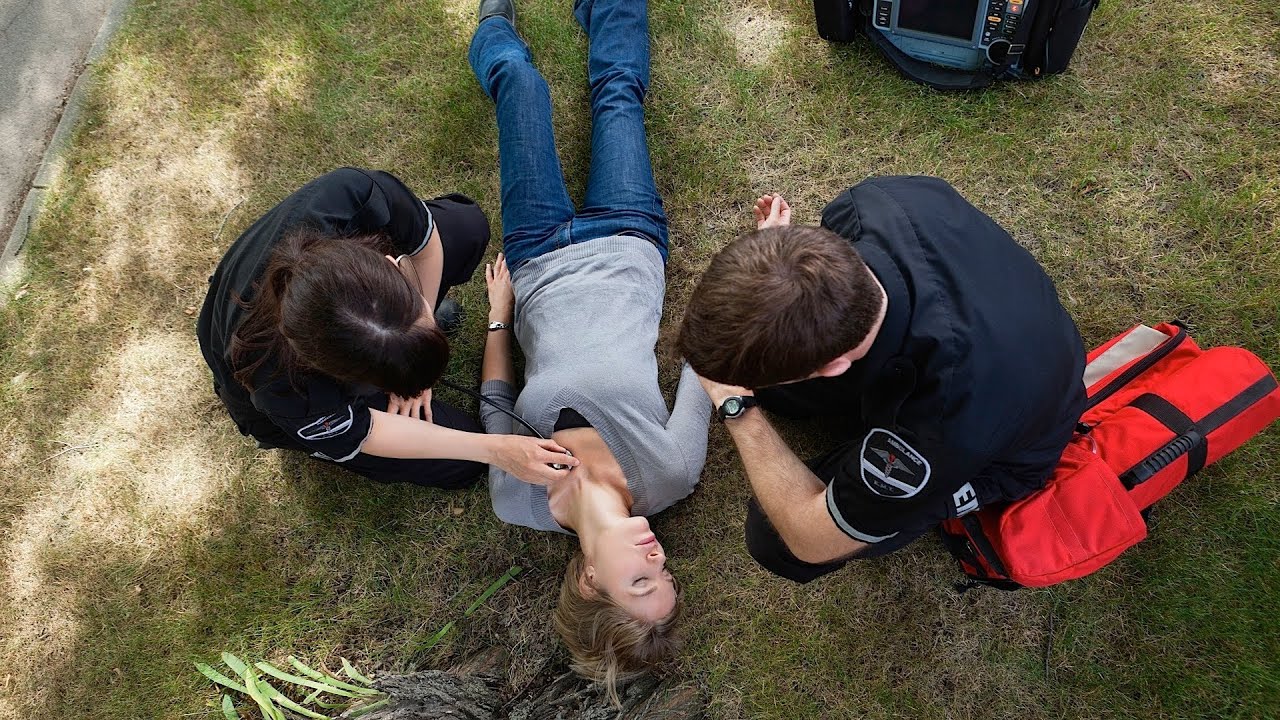What to Do for Someone Having a Seizure | Epilepsy
Watch more Epilepsy & Seizure Disorders videos: http://www.howcast.com/videos/502027-What-to-Do-for-Someone-Having-a-Seizure-Epilepsy
– Patty McGoldrick: If you should see someone having a seizure, first of all, it’s most important not to panic and get upset about it. You really need to try and help that person out. So, depending on how the seizure presents, if it’s a confusional episode, you’re just sort of following them around, making sure they don’t come to any harm. If it’s a big generalized tonic-clonic seizure, you need to put the person down on the ground or on the floor, turn them on their side so that they’re not going to choke if they spit up or they vomit, and let the seizure run its course.
– Steve Wolf: When they’re laying on their side, what’s important is to put a pillow underneath their head. If they’re banging or jerking around, don’t restrain them. Just sort of keep them in one place so they don’t fall off a bed or off a chair, and make them comfortable. Do not put your hands in their mouth.
– Patty: Absolutely not, unless you want to get your fingers bitten off. So, it’s an old wives’ tale that you’re supposed to put something in their mouths to protect them. Do not put anything near their mouth, turn them on their side, protect them from harm. If there’s furniture nearby that they can bang against and get hurt, move that and get out of the way, and let it just run its course and keep them comfortable, without panicking, without getting upset.
Typically, if it’s a stranger that you’ve never seen before, you should call 911. If it’s somebody who’s known to have seizures, their seizures are usually self-limiting and last less than usually five minutes, so just let it run its course and keep them comfortable.
– Steve: I think what scares people the most is that gagging, choking sound that you can hear, but we know that that is just part of the seizure, and that they’re not having problems breathing. And if you have them in a good position laying on their side, with their head to their side, they’re not going to swallow their tongue, they’re not going to choke, and so you could just let them go through that. And then, very frequently, they have that snoring sound after the seizure ends that sounds really scary, but that usually passes as well.
– Patty: The other thing that often happens is that people turn sort of blue, and whoever is with them, the rescuers or the family members, will think that they’re not breathing. But, actually, they usually do continue to breathe. It’s just that the blood is going away from their mouth and their lungs and their heart to their brain, so you don’t have to worry so much about respiration and that sort of thing. Turn them on their side, keep them safe, call for help, and let it run its course.



![[ID: nRNa_HkgYFQ] Youtube Automatic](https://bizimtube.com/wp-content/uploads/2021/03/id-nrnahkgyfq-youtube-automatic-236x133.jpg)
![[ID: nKvpMq-k4VE] Youtube Automatic](https://bizimtube.com/wp-content/uploads/2021/03/id-nkvpmq-k4ve-youtube-automatic-236x133.jpg)
![[ID: yhITUFbi7H8] Youtube Automatic](https://bizimtube.com/wp-content/uploads/2021/03/id-yhitufbi7h8-youtube-automatic-236x133.jpg)
![[ID: 1G3UK4EgsIM] Youtube Automatic](https://bizimtube.com/wp-content/uploads/2021/03/id-1g3uk4egsim-youtube-automatic-236x133.jpg)
![[ID: _zHdzEzAt9o] Youtube Automatic](https://bizimtube.com/wp-content/uploads/2021/03/id-zhdzezat9o-youtube-automatic-236x133.jpg)
![[ID: gqgRajnKkBI] Youtube Automatic](https://bizimtube.com/wp-content/uploads/2021/03/id-gqgrajnkkbi-youtube-automatic-236x133.jpg)
![[ID: 5-3fSrQTBxI] Youtube Automatic](https://bizimtube.com/wp-content/uploads/2021/03/id-5-3fsrqtbxi-youtube-automatic-236x133.jpg)
![[ID: ouCtbSdrkWc] Youtube Automatic](https://bizimtube.com/wp-content/uploads/2021/03/id-ouctbsdrkwc-youtube-automatic-236x133.jpg)
![[ID: MgYLCr1GLO8] Youtube Automatic](https://bizimtube.com/wp-content/uploads/2021/03/id-mgylcr1glo8-youtube-automatic-236x133.jpg)
![[ID: vVCcQJpk2H4] Youtube Automatic](https://bizimtube.com/wp-content/uploads/2021/03/id-vvccqjpk2h4-youtube-automatic-236x133.jpg)
![[ID: hCMKysXAbco] Youtube Automatic](https://bizimtube.com/wp-content/uploads/2021/03/id-hcmkysxabco-youtube-automatic-236x133.jpg)
![[ID: fM9J7p32XCA] Youtube Automatic](https://bizimtube.com/wp-content/uploads/2021/03/id-fm9j7p32xca-youtube-automatic-236x133.jpg)